Revisiting the renaissance with Assassin's Creed 2
History lessons with Ezio Auditore da Firenze.
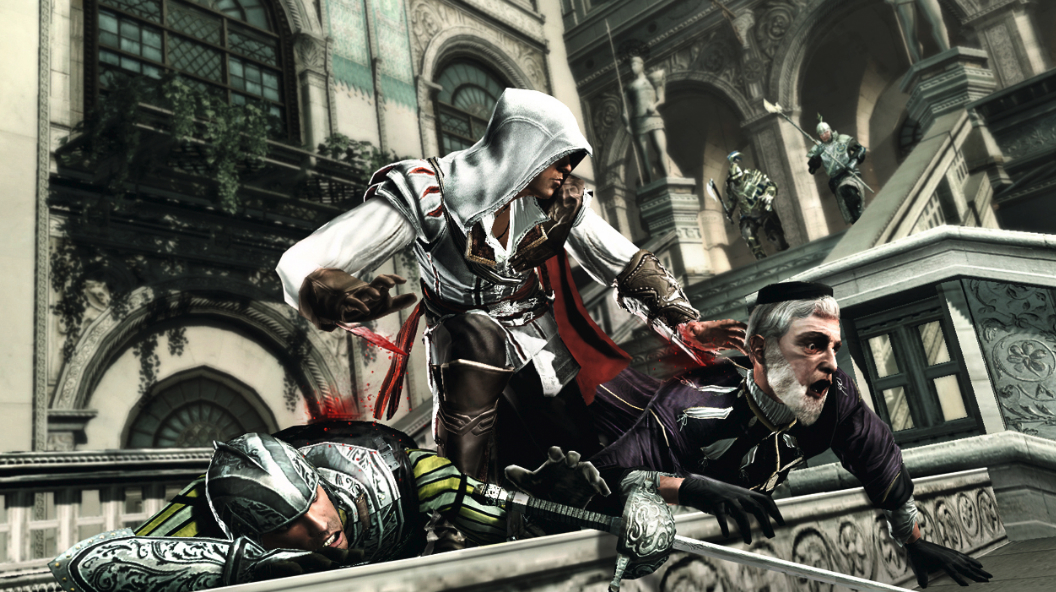
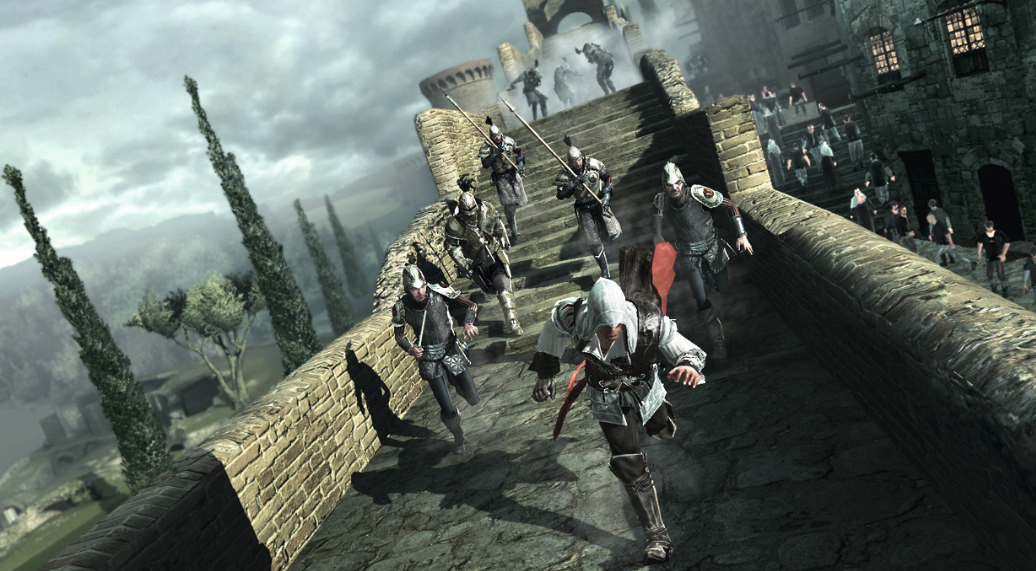
Reinstall invites you to join us in revisiting PC gaming days gone by. Today Andy explores the origins of Assassin's Creed 2 and how it bettered a lacklustre series debut.
We’re introduced to Ezio Auditore da Firenze, the historical protagonist of Assassin’s Creed 2, the moment he’s born. He pops out of his screaming mother and, in a truly bizarre tutorial, the game urges you to wiggle his arms and legs. Then we skip forward in time to his unruly teenage years, brawling and shagging his way around Florence. This could have easily been an indulgent, ponderous way to begin the game, but it’s actually brilliant. Too many games hurry you into the action, but this one takes its time and lets you get to know its hero before tragedy inevitably strikes.
Ezio’s father is framed for treason and executed by a corrupt magistrate, which inspires Ezio to join the Assassins and embark on a quest for vengeance across Renaissance Italy. Back in the present day, Desmond Miles is reliving these events through the Animus, an absurd machine that can download the past from your DNA and turn it into an open-world action/adventure videogame. Assassin’s Creed 2 opens with a dry recap of the original game’s story, which at this stage in the series’ evolution was only a fraction as madly convoluted as it is now. The new narrative jumps back and forth between the past and present throughout, but you spend most of your time as Ezio, thankfully.
Ezio was a direct response to criticism of the first game’s hero, the sullen and forgettable Altaïr Ibn-La’Ahad. When designing Assassin’s Creed 2, Ubisoft Montreal first looked at reviews of the original to determine which areas needed to be improved. The two main objectives for the game, according to a GDC talk given by designer Patrick Plourde, were to “answer every criticism of the first game”, and to repeat its commercial success. And so, based on the lukewarm response to Altaïr, they brought in the charming, witty Ezio, who remains the series’ most likeable and charismatic hero.
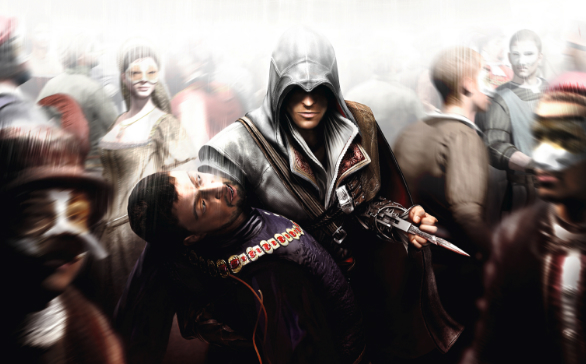
Work began on Assassin’s Creed 2 in early 2008 and, thanks to the tireless efforts of 300+ developers, it was released in November 2009. This is astonishing when you consider how big the game is, with multiple cities, a lengthy cinematic story, and new features including revamped combat, a notoriety system, and the ability to hire factions. In the first six months the studio produced 200 design documents for new features, only one of which received a revision. “The production cycle meant we had zero time to polish the game,” says Plourde. “The save system was implemented just two weeks before the first code submission. It was really tight.”
Given this merciless schedule, it’s remarkable how well Assassin’s Creed 2 turned out. The running and climbing feel a little stiff compared to recent games’ slick free-running, but otherwise it’s a polished, confident sequel with a sense of fun the series occasionally seems to forget. Climbing the Duomo in Florence for the first time and seeing the sprawl of the city, although not quite as impactful as it was back in 2009, is an evocative moment—made extra special by composer Jesper Kyd’s superb score. It’s such a good sequel, in fact, that it feels like the real beginning of the series. The first game had some good ideas, but was ultimately a failed experiment. In terms of design, at least: despite mixed reviews, it still sold eight million copies.
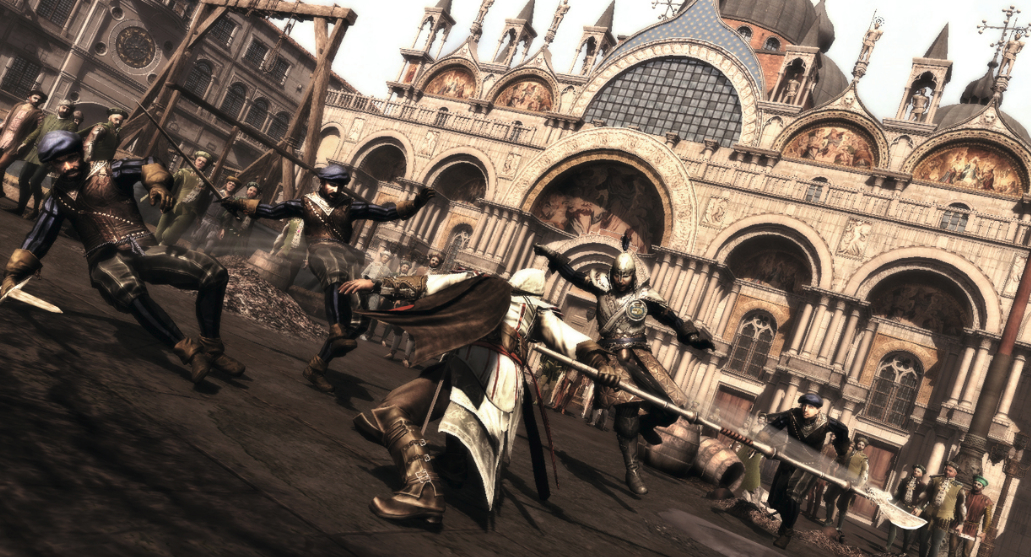
He pops out of his screaming mother and, in a truly bizarre tutorial, the game urges you to wiggle his arms and legs. Then we skip forward in time to his unruly teenage years, brawling and shagging his way around Florence.
Florence is Ezio’s birthplace—that’s what the “da Firenze” in his name means—and the game’s opening hours are spent here. Bumping into historical figures is something of a running gag in Assassin’s Creed, and the second game is no different. Ezio befriends Leonardo da Vinci in Florence and the famous polymath supplies him with weapons, upgrades and gadgets, including one of his famous flying machines. As far as history knows these were never built or tested in real life, but in the game Ezio uses one to glide over the rooftops of Venice and infiltrate the heavily-guarded Palazzo Ducale. Other historical cameos include Niccolò Machiavelli, Lorenzo de’ Medici, and Rodrigo Borgia, who serves as the main antagonist. The Renaissance was a fascinating and vibrant period in European history and the game uses it well, albeit with some artistic liberties taken.
Later Ezio escapes to Tuscany and meets his uncle Mario Auditore, whose first line is, amazingly, “It’s-a-me, Mario!” The walled town of Monteriggioni, which still exists today, becomes his new home and can be upgraded to generate money. It’s an enjoyable distraction, and returning to the peaceful town after a mission is a nice way to decompress. Ezio also visits the cities of Forlì and San Gimignano. Neither is as vast or detailed as Venice or Florence, but it’s still amazing that they’re in there at all considering the pressure Ubi Montreal was under. You also briefly visit the Vatican, although we wouldn’t get to explore Rome itself until Brotherhood. In summary, it’s bloody enormous and I’m not sure how they managed it.
The biggest gaming news, reviews and hardware deals
Keep up to date with the most important stories and the best deals, as picked by the PC Gamer team.
Assassin’s Creed has always suffered from repetitive mission design, but recent games—particularly Syndicate, which is arguably the best one since Black Flag—have taken steps to make them more varied and interesting. Which makes returning to Assassin’s Creed 2 occasionally frustrating. There are a lot of tedious tailing missions with instant fail states, and chase sequences where the person you’re pursuing will comically wait for you catch up if you fall behind. It’s when you’re actually assassinating people that the game shines brightest, giving you some—but not a huge amount—of agency to observe your target and decide how exactly you want to kill them. The game was designed to be streamlined and accessible, which does negatively impact the complexity of its systems and your ability to think creatively.
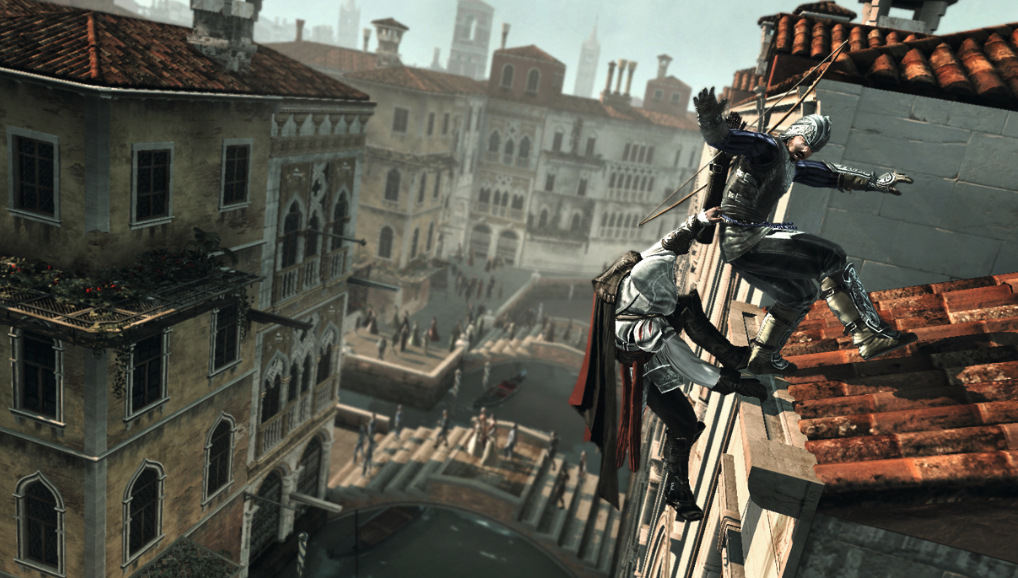
Assassin’s Creed 2 was horribly optimised for PC on release, but these days any reasonable gaming PC will be able to run it without breaking a sweat. For my revisit I played in 4K, and it still looks decent in places. But a frustratingly short draw distance does sour the experience. Scenery and NPCs constantly pop in as you move around, and shadows are badly pixelated just a few metres ahead, magically sharpening as you approach them. It’s more distracting than it sounds, and it makes me wish Ubisoft would release its console-only, slightly remastered Ezio Collection on PC to iron some of these niggles out.
But when I reminisce, I don’t think about the weak stealth, abundance of dull missions, or dodgy tech. I think about that ludicrous, exciting holiday I had in Renaissance Italy, hanging out with Leonardo, exploring ancient tombs, flying through the air and kicking people off Venetian rooftops, upgrading my villa, and buying fashionable new capes. It’s a game that’ll always hold up in my mind better than it does in reality, and that’s fine. Sometimes good memories of a game are all you need. However, if you do feel compelled to return, there’s still fun to be had. You just have to pick through a lot of old-fashioned open-world design to find it.
If it’s set in space, Andy will probably write about it. He loves sci-fi, adventure games, taking screenshots, Twin Peaks, weird sims, Alien: Isolation, and anything with a good story.


